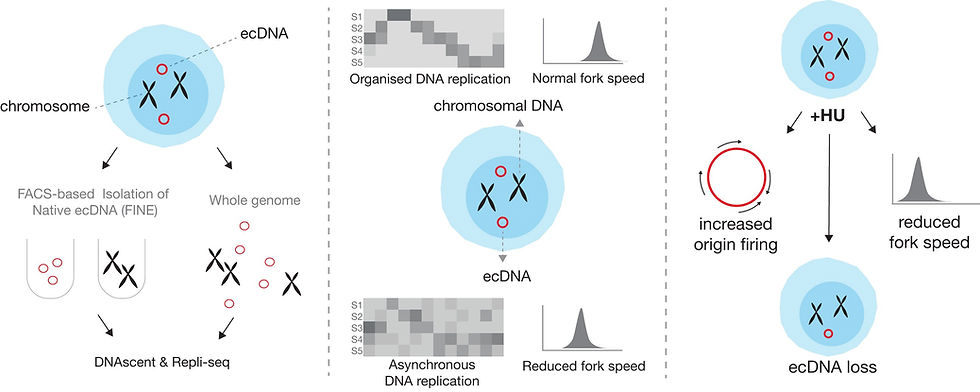A mathematical model for the regulation of replication timing in budding yeast
- Admin

- Jun 11
- 1 min read

Our manuscript entitled “Regulation of replication timing in Saccharomyces cerevisiae” has just been published in PLOS Computational Biology. Here, we present a high-resolution, simulation-based model for whole-genome replication in S. cerevisiae (budding yeast). In our model, potential starting points for replication compete to bind with a limited number of essential proteins. We show that the model can reproduce known features of DNA replication dynamics and also predict aspects of the process that have not yet been measured experimentally. By making the model as simple as possible while still capturing the key features of DNA replication, we identify the factors most important for determining replication timing. Our model provides a useful tool for investigating how replication is coordinated and may help to guide future research.
This work was led by Rosie Berners-Lee during her one-year placement in our lab as part of her combined bachelors/masters programme at the University of St Andrews. It also features work from Eamonn Gilmore who worked on this research during his two-term undergraduate lab placement in Part II Pathology. Both highlight the absolutely amazing amount of progress our students can make in a short span of time.
We are very grateful for our excellent high-performance computing facility at the Cambridge Service for Data-Driven Discovery (CSD3) which made this work possible.
Team










